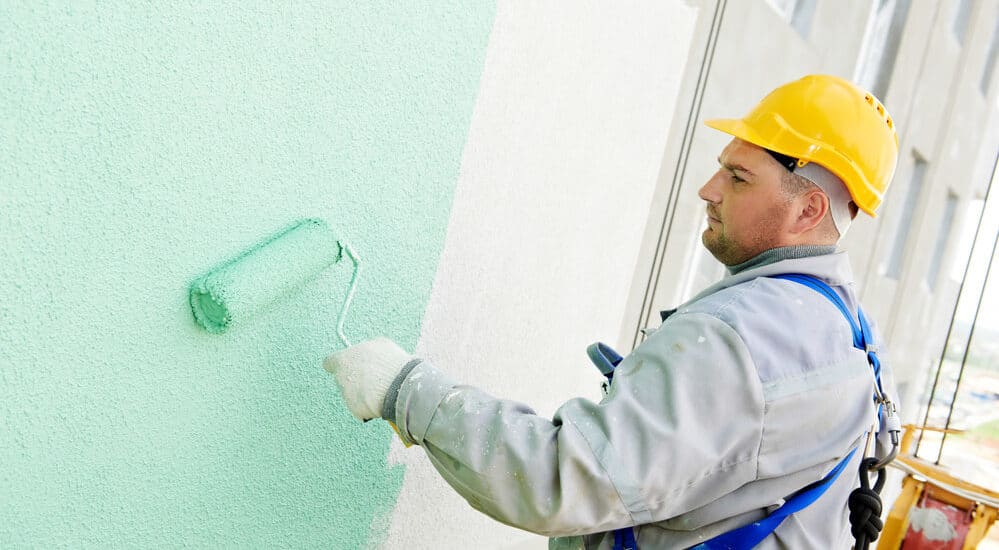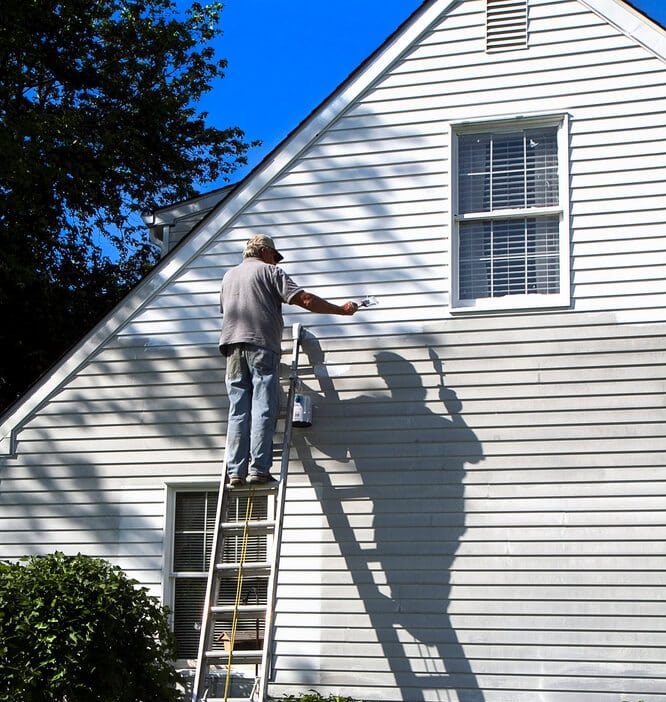
Call Us Today!

Call Us Today!

When it comes to exterior painting projects, the weather plays a significant role in the overall outcome. From extreme temperatures to heavy rain, each weather condition presents its own set of challenges.
Understanding the impact of weather on exterior painting is crucial for achieving a long-lasting and professional finish.
Extreme temperatures can wreak havoc on your exterior paint, causing it to crack, peel, and fade, leaving your home looking worn and neglected. When the temperature rises too high, the paint can expand, leading to cracking and bubbling.
This not only affects the appearance of your home but also compromises the protection it provides against the elements. The intense heat can cause the paint to lose its adhesion to the surface, making it more susceptible to peeling and chipping.
Additionally, the UV rays from the sun can cause the paint to fade, making it lose its vibrant color and giving your home a dull and weathered look.

This is particularly problematic when there are frequent temperature fluctuations, as the paint contracts and expands repeatedly, further weakening its integrity.
The freezing temperatures can also cause moisture to form beneath the paint’s surface, leading to blistering and peeling.
Furthermore, snow and ice can accumulate on the painted surface, adding additional weight and potentially causing the paint to chip or flake off.
Extreme temperatures can have a detrimental effect on your exterior paint, both in hot and cold conditions. It is essential to choose high-quality paint that is specifically formulated to withstand these temperature extremes.
Regular maintenance and inspection of your exterior paint can help identify any signs of damage early on and allow for timely repairs. By taking proactive measures, you can protect your home’s exterior and ensure that it remains fresh and well-maintained for years to come.
Significant consideration should be given to the role of humidity when painting outdoors. Humidity, which refers to the amount of moisture present in the air, can greatly affect the outcome and durability of an exterior paint job.
When the humidity is high, the paint takes longer to dry, increasing the risk of sagging, running, or bubbling. This can result in an uneven finish and may require additional touch-ups or even a complete redo of the project.
On the other hand, when the humidity is too low, the paint may dry too quickly, leading to poor adhesion and a compromised finish.
In addition to affecting the drying time, humidity can also impact the application process. High humidity can cause the paint to become thicker, making it more difficult to spread evenly on the surface.
It can also result in a longer drying time between coats, prolonging the overall painting process. Conversely, low humidity can cause the paint to become thinner, potentially leading to drips and runs.
It is important to note that different types of paint have varying tolerance levels to humidity, so it is essential to read and follow the manufacturer’s recommendations for optimal results.
Overall, understanding the role of humidity in painting is crucial for achieving a successful exterior paint job. It is recommended to paint when the humidity levels are within the ideal range specified by the paint manufacturer.
Additionally, it is important to monitor the humidity levels throughout the painting process, as they can change throughout the day. By taking these factors into account and making the necessary adjustments, homeowners and professional painters can ensure a long-lasting and visually appealing paint job that withstands the effects of weather and time.

However, there are measures you can take to minimize the impact of heavy rain on your painting project. One important step is to monitor the weather forecast closely and plan your painting schedule accordingly.
If rain is predicted, it’s best to postpone the painting until the weather clears up. Additionally, you can use tarps or plastic sheeting to cover the areas you have already painted and protect them from the rain. This will help prevent the paint from being washed away or diluted by the rainwater.
Another strategy to deal with heavy rain during exterior painting projects is to choose the right type of paint.
Opting for a high-quality exterior paint that is specifically designed to withstand harsh weather conditions, including heavy rain, can greatly increase the durability of your paint job.
These paints often have better adhesion and resistance to moisture, which makes them less likely to be affected by heavy rain.
Applying an extra coat or two of paint can also provide an additional layer of protection against rain damage. It’s important to ensure that each layer is fully dry before applying the next one to prevent the paint from getting washed away.
In conclusion, although heavy rain can pose challenges during exterior painting projects, taking proactive measures such as monitoring the weather, using protective coverings, and selecting the right type of paint can help you achieve a successful and long-lasting paint job despite the rain.
Certainly! Here’s a condensed list of five essential tips for painting in hot weather:
Proper preparation and awareness of the unique challenges presented by hot weather can ensure a smooth painting process and optimal results.

This can be frustrating and can prolong the overall project timeline. However, there are ways to mitigate this issue. One strategy is to use paint that is specifically formulated for cold weather conditions.
These paints are designed to dry faster at lower temperatures, allowing you to complete the project more efficiently.
Additionally, it is important to choose a day with optimal weather conditions. Painting on a sunny day when temperatures are slightly higher can help speed up the drying process.
Another challenge of painting in cold weather is that the paint may not adhere as well to the surface. Cold temperatures can cause the paint to become thick and less smooth, making it difficult to achieve a professional-looking finish.
To combat this, it is important to properly prepare the surface before painting. This includes cleaning the surface thoroughly and using a primer to ensure good adhesion. Additionally, it may be helpful to warm up the paint before applying it.
Placing the paint cans in a warm room or using a space heater can help to thin out the paint and make it easier to work with. Overall, painting in cold weather requires some extra precautions and patience, but with the right strategies, it is still possible to achieve excellent results.
Whether you’re an experienced painter or tackling a DIY project, it’s important to consider the impact of weather on exterior paint jobs. Understanding the fundamentals of painting in extreme temperatures can help ensure that your paint job will last for years and look beautiful.
With proper preparation, taping, and choice of materials, you can be sure that you get a paint job that stands the test of time. So remember, even though Mother Nature may be at odds with you, don’t let her win!
Do your research before tackling any big home projects, and make sure you understand all the challenges associated with painting in certain types of weather.
If you need a local professional painter who understands how to work under unpredictable conditions then call Kind Home Solutions today to get started. We want to help make your project successful! Contact us today to learn more about our services.